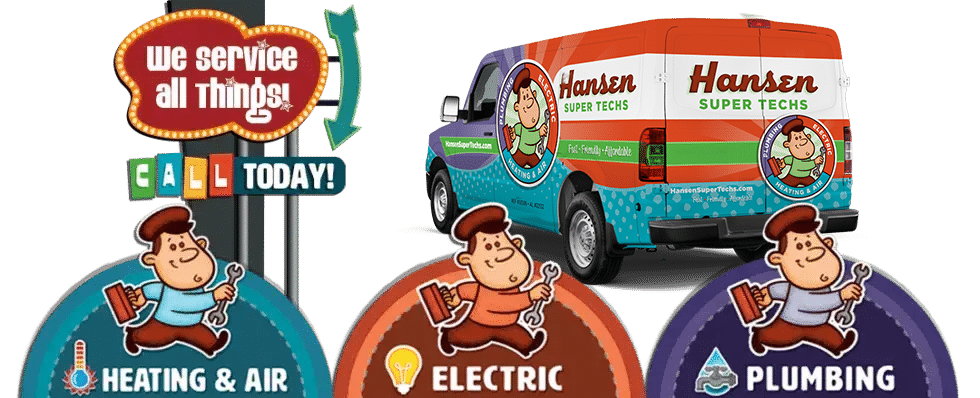Top Indoor Air Quality Issues in Autumn

When most people think of the scariest health risks to them and their families, they often do not think of the air they breathe in their own homes. That said, the EPA recognizes poor indoor air quality among the top health risks facing Americans. It also warns that air quality is often worse indoors than outdoors—both at home and at work—due to reduced ventilation and thus higher concentration levels. With this in mind, let us consider the indoor air risks that your family faces as summer draws to a close.
Unpredictable Temperatures
Fall can be a rather crazy time of year throughout the United States. Temperatures are generally moderate, but this is a transitional period. Your area can experience sudden heat spikes that make it feel like summer all over again. It can also experience sudden cold fronts that make it feel a lot more like winter than autumn. This volatility is particularly problematic for homes that still rely on a manual thermostat. Getting the temperature dialed in while you are home and especially while you are away can be difficult. Not only is this situation uncomfortable and energy inefficient, but it can also exacerbate some of the other indoor air quality issues that we will discuss, such as high humidity levels. The EPA strongly recommends a smart thermostat both for your wallet and the health of your family.
High Humidity Levels
Most people think of autumn as a season when it gets cooler, and while that is true for the most part, it does not mean that it gets less humid. In fact, high humidity levels are a reason that fall can feel hotter than it actually is. It is not uncommon for autumn humidity levels to hover around 100 percent at least early on. These levels not only make you uncomfortable but exacerbate mold and mildew issues and lead to respiratory problems. A harder time breathing can often be accompanied by dry nasal passages, an itchy throat, eyes that lack moisture, and dry skin too. Running your AC can help to lower humidity levels, but in some areas, you may need a room-based or even a whole-home dehumidifier as a solution.
Airborne Contaminants and Pollutants
Numerous indoor air pollutants and contaminants can be present indoors at high levels during the fall. If you are running your air conditioner, then you will rely on the home’s mechanical ventilation system and HVAC filtration. It is a good idea to have your ventilation system professionally assessed every several years or so. Be mindful that while HVAC filtration helps, it is designed more to protect your equipment than it is to clean the air. If you are in an area where contaminant levels are known to be high, then you might want to consider room-based or whole-home air filtration.
It is not uncommon to spend most of the summer with the AC running and the home boxed up. It is, therefore, a natural inclination to want to fling all the windows open on that first cool today. Generally, that natural ventilation will be more than enough to normalize contaminant levels. But you should avoid that much natural ventilation on days when the air quality index is expected to be above 100 or when there is an expectation that pollen and other outdoor air contaminants will be present at high levels.
Allergies
Fall can be a bad time of year for allergies and certainly asthma and other respiratory conditions. Many people are aware they have allergies and have learned through trial and error the precautions they can take to minimize their symptoms. But there are many people who experience uncomfortableness during fall and never really link it to allergies. To them, it is something that just happens, but often these are minor reactions to pollen, dust, dander, and other contaminants. Beyond seeking help from a medical professional, there is not much you can do about allergies. Professionals recommend that you stay hydrated and remain in air-conditioned spaces when contaminant levels are expected to be high.
Mold and Mildew
Mold is one of the leading causes of poor indoor air quality. What is most concerning about mold is that its spores can undermine your air quality long before you can see or smell it. In addition, mold can present health issues long before it seems like a substantial problem. These issues are further exacerbated in fall due to high humidity, rainfall, and other issues that can contribute to mold growth. Dehumidifiers can help you to avoid mold. Air purification can help to eliminate mold spores, but that is treating the symptom and not the problem. Routinely monitor the zones in your home that are prone to molds, such as bathrooms and basements. If you suspect a mold problem, it is imperative that you schedule a professional test and take whatever steps are needed to eliminate the sources of the mold.
Suboptimal Air Circulation
Inadequate ventilation is a common problem with newer homes. Older homes tend not to be as well sealed and thus have additional natural ventilation, such as cracks in walls and foundations. The techniques and technologies used to create well-sealed homes have evolved greatly over the last couple of decades. That has led to homes that are more energy efficient than once thought possible. It also presents a number of challenges when it comes to mechanical ventilation.
If the mechanical ventilation is inadequate for the space or operating in an inefficient manner, then air does not flow in and out of the home in an optimal manner. This can lead to the air conditioner working harder than it should. More worrisome, however, is that pollutants from the outdoor air get trapped in the home and cause the concentration levels to rise. This can be particularly dangerous and is one of the chief reasons the pros recommend ventilation inspections on a regular basis.
Dust
Dust is a problem throughout the year, but it is particularly problematic for many households at the end of summer and again at the end of winter. The reason for this is that these are the periods when you spend the most time indoors and tend to do so with either the air conditioner or heating running. There are also other issues, such as pets, overwatered plants, and fireplaces. The best way to avoid this problem is to dust every day during summer and perform a deep dusting once a week. If you fell behind, this is a good time to perform a “spring cleaning” or pay a company to do it. After all, dust is much more than dirt, hair, and skin. It is a compound that traps contaminants and pollutants and continues to put them back into the home over time.
Your Local Indoor Air Quality Experts
Hansen Super Techs specializes in indoor air quality for Mobile, Alabama, Baldwin County, and throughout the Missouri coast. These services include energy audits, air purification systems, germicidal UVC systems, and dehumidifiers. Our team also performs heating and cooling installations, maintenance, and repairs. If you have any questions about the services we offer and would like to schedule an appointment, call us or contact us online through our website!

